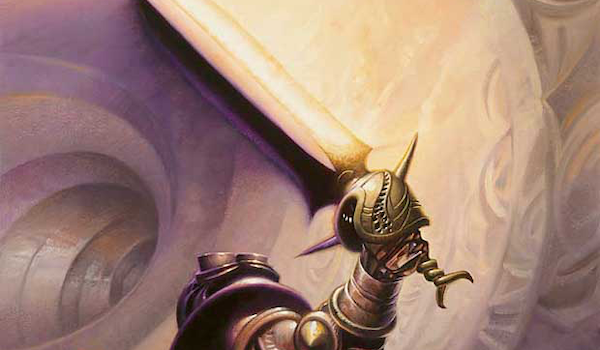Are you a Quiet Speculation member?
If not, now is a perfect time to join up! Our powerful tools, breaking-news analysis, and exclusive Discord channel will make sure you stay up to date and ahead of the curve.
Creatures decide games of Draft. Interactive spells like removal or counters can slow the impact of creatures, but rarely will they blunt their overall impact. Creatures pressure our opponent, defend our life total, occasionally generate card advantage, and dictate the pace of the game. When we talk about the curve of our deck, we are most often talking about creatures.
While some creatures generate value from their text, most do their work during the combat step. Whether it be a single evasive creature pecking in for damage, or two boards accumulating strength to crash towards each other, it's the creatures that determine that outcome. It's why we play Murder in the maindeck and Disenchant in the sideboard.
During the draft, we seek out creatures, removal spells, card advantage, and fixing. Oftentimes, we walk away with other options in our pool. Since combat is so important to the outcome of Draft games, we need to make sure we're building our decks to optimize this step. Magic the Gathering offers multiple tools to augment our creatures. However, figuring out which one is the best for our deck isn't always simple.
You Need Creatures
While I'm willing to first pick a Sword of Feast and Famine, it's far more common that you won't bother with combat tricks or equipment until you have a strong assortment of creatures to augment.
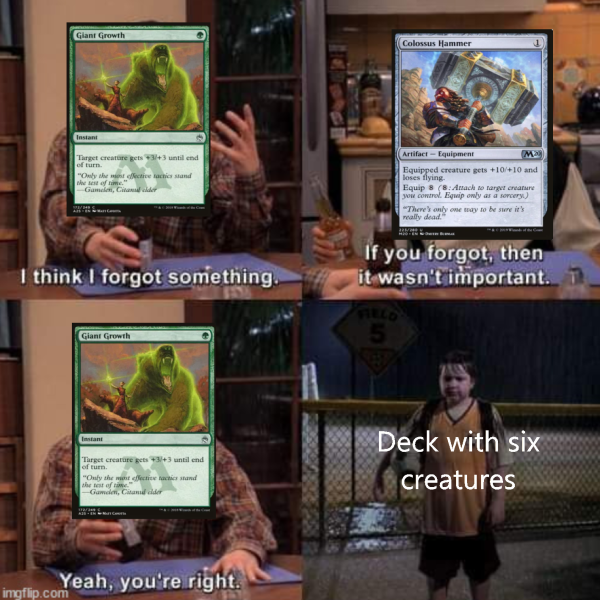
Tricks and equipment help us take advantage of the combat step. However, if we don't have a powerful selection of creatures, they won't actually do all that much. It should never feel like we're assembling a combo to make our combat trick work.
In fact, the number one problem I see when I look at Draft decks from new players is that they simply don't have enough creatures. As a result, their decks don't do anything. Creatures really are the pawns of Limited, and it's difficult to win without them.
The Problem with Auras
Auras can be powerful when they're uncontested. Unfortunately, the fact that they so often result in getting two-for-one'd is a convincing reason to avoid them. While there are some exceptions, I generally do not like putting auras in my deck unless I'm netting some kind of card advantage for playing them.
Less Vulnerable Auras
These cards all make themselves less susceptible to a blow-out. They each provide a little bit of value, and as a result, it's not a total disaster if the creature they enchant crosses paths with a kill spell. Certain formats, such as Theros Beyond Death, incentivize auras in other ways. While I caution against their inclusion, they're not without use.
Last week, my local game shop held an M14 draft. I built a pretty mopey red-green deck filled with reasonable creatures and some interaction. It was nothing special. However, I drafted and included two copies of Shiv's Embrace. My deck lacked the aggressive three-drops to pressure opponents early, and I knew I needed a way to close out games. While the auras were vulnerable, I tried to hold them until I thought they would finish off the game. A single Ranger's Guile helped my efforts. I had some success, going 2-1 for the evening.
Equipment vs. Combat Tricks
You should be including equipment and tricks more often than auras. A single combat trick can blow open a game and create exploitable leverage. A single piece of equipment can be used over multiple combat steps to grind out a powerful advantage. While sometimes a single card should be prioritized based on power level, you generally want the one that supports your plan better.
The Trick With Combat Tricks
The combat trick is the most versatile tool one can use to augment creatures. Though it has a one-time use, it requires very little set-up cost. All you need is a creature to target and a situation to exploit.
These cards can swing combat. Yet, they're not always easy to hide. If you attack a tapped-out opponent with a 2/2 and open mana into their 3/3, they're going to sense that something is up. Don't expect a snap-block.
However, if you're playing a deck that is constantly attacking and willing to throw creatures away for damage, it becomes significantly harder to identify a trick. If you're aggressive enough, then your opponent may be concerned about the trick, but have no other recourse than to "make you have it." Combat tricks are great for decks that are looking to set up alpha strikes or that are constantly pressuring opponents.
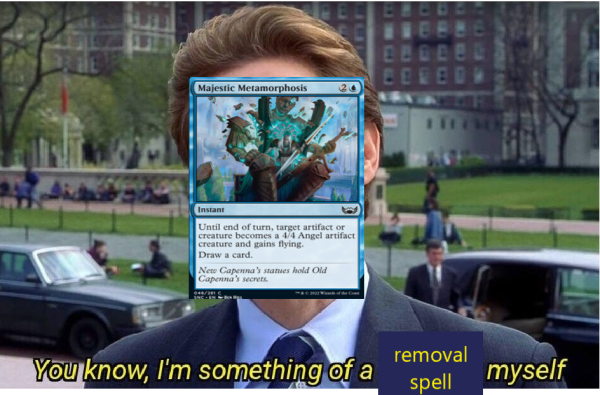
Setting up timely combat tricks can do more than just push damage. Oftentimes, they're used to remove difficult creatures. Once blockers are declared, a combat trick can bin an opponent's creature just as effectively as a traditional removal spell. When your deck lacks removal, the value of combat tricks increases significantly.
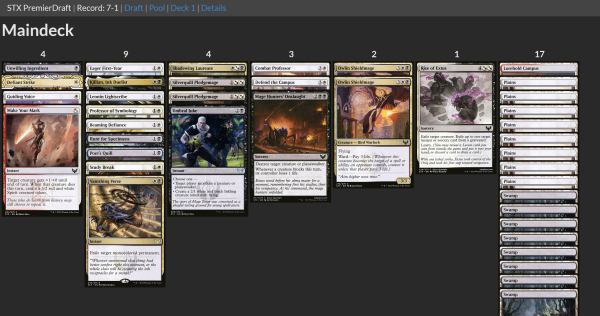
Few archetypes in recent history used tricks better than Silverquill out of Strixhaven (STX). This aggressive deck was willing to throw away resources to increase its clock. Make Your Mark, Beaming Defiance and Defiant Strike all helped to pressure opponents while triggering spellcraft. Sidenote: Poet's Quill was included not because it is an equipment, but because it's a huge bomb.
Permanents Are Just That. Permanent.
Equipment cards are often very powerful. Take a card like Vulshok Morningstar. I just sang the praises of Beaming Defiance, which provides the same boost to power and toughness as the artifact. However, the equipment can be used every turn to enhance an attack. Though the costly down payment and recurring tax to reequip the Morningstar will cost me far more tempo than the combat trick ever could. Though they are more powerful, they're much clunkier.
Whereas a combat trick needs a small window to be effective, equipment typically requires that you play it, equip it, and attack before you net any value. A lot needs to go right for that to work. If I'm relying on evasive attackers, like in a Blue White skies deck, being able to turn every Wind Drake into a Serra Angel is going to be hard to beat.
If my deck wants to pressure my opponent over a longer period of time, typically with smaller attacks, then equipment becomes valuable. In Kamigawa Neon Dynasty (NEO) the Red White Samurai Archetype was built around this strategy.
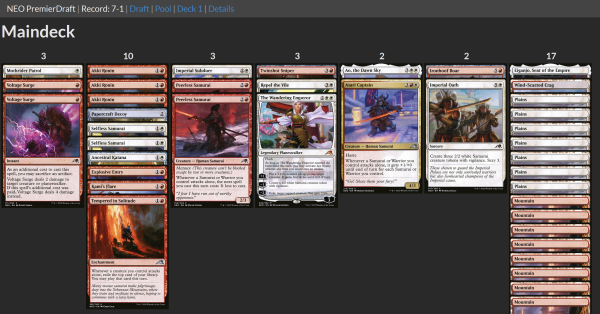
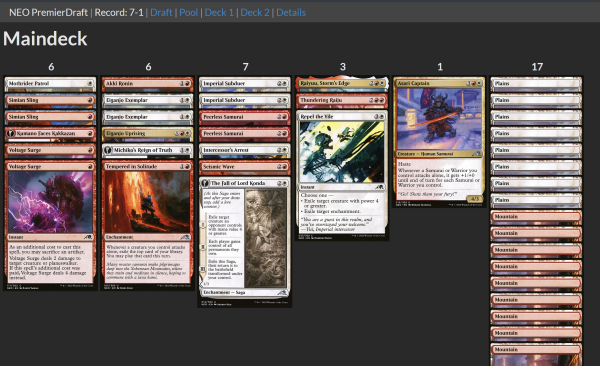
These were the first two trophy decks I played in NEO. While the reconfigure equipment provides a lot of versatility, knowing that I was going to be surgically dissecting my opponents' defenses one turn at a time caused the equipment to overperform.
Playing Against Cheap Removal
Efficient removal spells punish both equipment and combat tricks. However, if I know my opponent has access to cheap interaction, I want to consider the expectations of my game plan. If I know I plan on winning with tempo, then I want to use combat tricks to finish the job. Though I need to be cautious with my timing, I can still set up powerful tricks. If my opponent is likely to stick a Wall of Omens or Psionic Snoop before hiding behind removal spells, my combat tricks can keep them off balance.
Equipment can help me grind out wins, but it can be a liability in a race. While a super aggressive deck might not recover from the tempo loss associated with equipment, a more midrange approach might. Surely they won't remove every creature on my board. If at the end of the day a top-decked creature can pick up the artifact, I can force an opponent into a frustrating spot.
Cheap removal does make me question the inclusion of these types of cards. However, if I know my plan and understand how my opponent plans to defend against it, I can make tactical choices to put myself in the best possible situation.
Making the Critical Decision
One advantage of combat tricks is that they can act as interaction. When I draft a deck that is short on removal, then I prioritize combat tricks. If I'm the aggressor, it can be easy for me to turn a Skulduggery into a Doom Blade.
Equipment generally provides more value, while tricks leverage a tempo game plan. Tricks that draw cards will often times over-perform, but some equipment can dominate games. These cards will usually be available on the wheel and later in the draft, but that doesn't mean they're not significant choices. Remember that small edges are the only edges, especially when playing in more competitive circles. Know what your deck is doing as you build it and look to optimize every choice.
While heuristics can help, every deck and every match-up is different. The biggest step forward is being cognizant of how your choices are impacting your plan. There is no better teacher than experience. Make your best choice, reflect on it, and use your learning for next time. Choose wisely!


